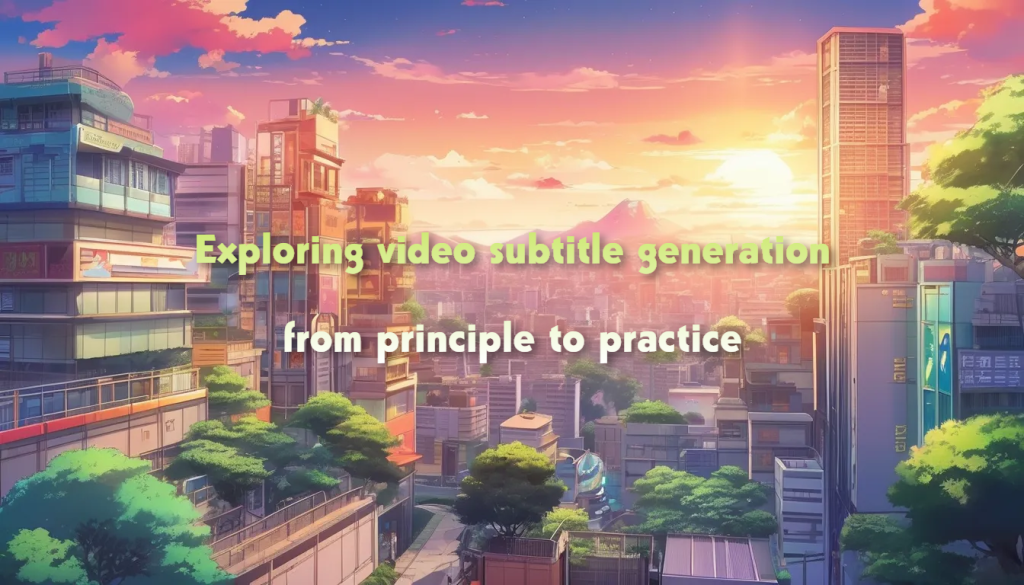1.Basic Concepts of Video Subtitle Generation
Video subtitle generation, as the name implies, refers to the process of automatically generating text descriptions based on video content. Similar to image captioning, video caption generation needs to process a series of continuous images (i.e., video frames) and consider the temporal relationship between them. The generated subtitles can be used for video retrieval, summary generation, or to help intelligent agents and visually impaired people understand video content.
2.Technical Principle
Feature extraction
The first step in video subtitle generation is to extract the spatiotemporal visual features of the video. This usually involves using a convolutional neural network (CNN) to extract two-dimensional (2D) features from each frame, and using a three-dimensional convolutional neural network (3D-CNN) or optical flow map to capture dynamic information (i.e., spatiotemporal features) in the video.
- 2D CNN: commonly used to extract static features from a single frame.
- 3D CNN: such as C3D (Convolutional 3D), I3D (Inflated 3D ConvNet), etc., which can capture information in both spatial and temporal dimensions.
- Optical flow map: represents dynamic changes in the video by calculating the movement of pixels or feature points between adjacent frames.
Sequence Learning
After extracting features, it is necessary to use sequence learning models (such as recurrent neural networks (RNNs), long short-term memory networks (LSTMs), Transformers, etc.) to translate video features into text information. These models can process sequence data and learn the mapping relationship between input video and output text.
- RNN/LSTM: Captures temporal dependencies in sequences through recurrent units.
- Transformer: Based on the self-attention mechanism, it can process sequence data in parallel to improve computational efficiency.
Attention Mechanism
In order to improve the quality of video subtitle generation, the attention mechanism is widely used in video subtitle generation. It can focus on the most relevant part of the video when generating each word. This helps to generate more accurate and descriptive subtitles.
- Soft Attention: Assign different weights to each feature vector in the video to highlight important information.
- Self-Attention: Widely used in Transformer, it can capture long-distance dependencies within the sequence.
3.Practical Application
Video subtitle generation technology has broad application prospects in many fields:
- Video retrieval: quickly retrieve relevant video content through subtitle information.
- Video summary: automatically generate video summary to help users quickly understand the main content of the video.
- Accessibility service: provide text description of video content for visually impaired people to enhance their ability to obtain information.
- Intelligent assistant: combine speech recognition and natural language processing technology to achieve a more intelligent video interaction experience.
4.Summary and Outlook
As an important branch of multimodal learning, video subtitle generation technology is gradually gaining widespread attention from academia and industry. With the continuous development of deep learning technology, we have reason to believe that future video subtitle generation will be more intelligent and efficient, bringing more convenience to our lives.
I hope this article can unveil the mystery of video subtitle generation technology for you and give you a deeper understanding of this field. If you are interested in this technology, you might as well try to practice it yourself. I believe you will gain more and experience more.

